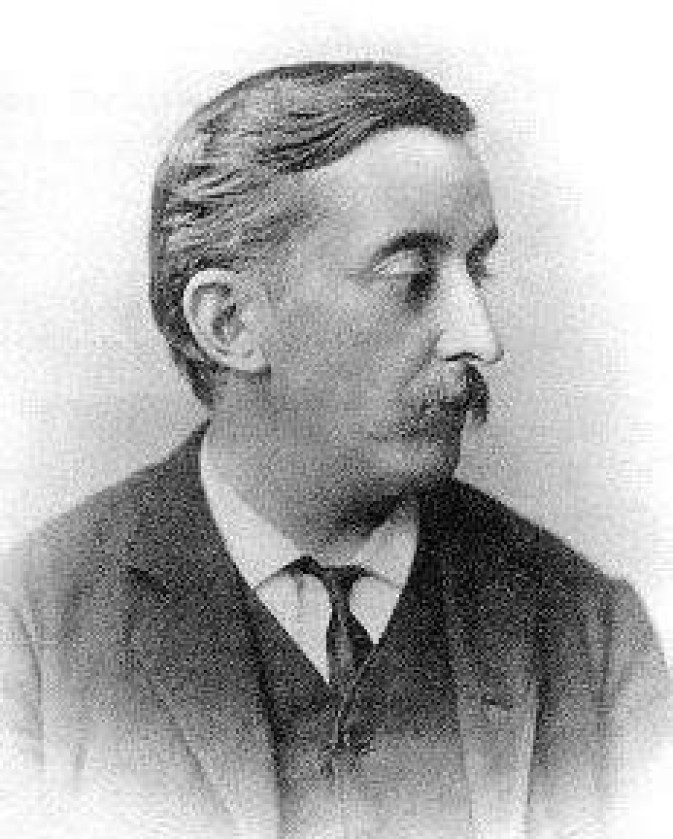Lafcadio Hearn, Famous Kytherian Irish American Japanese
Lafcadio Hearn 1850-1904
Rosa Antonia Tessima Cerg Kassimatis (Cassimatis) was born on Kythira Island, in 1823. She married the Irish Surgeon Charles Hearn and had three children to him.
Rosa Kassimati Hearn's second child, was born on Lefkas Island, June 27, 1850: Patricio Lefcadio Hearn. He became a famous investigative journalist in Cincinnati, Ohio, and, later, a literary editor for New Orleans, Louisiana, newspaper. Later he became a world renowned author and an educator in Japan. He died from a heart attack in September, 1904, in Tokyo, Japan, where he is buried.
Email discussions with David Baldwin, Osaka, Japan, reveal that "when (Patricio) Lafcadio Hearn was 16 he lost an eye in a sporting event. The eye area became grotesque so he rarely appeared in a photo. When he did, he looked downward.
This photograph of Lafacdio Hearn derives from
http://www.trussel.com/f_hearn.htm
The Hearn family website at http://www.lafcadiohearn.net is very sophisticated.
This website is devoted to James Daniel Hearn by his great grandchildren, primarily Brad Hearn of Florida.
The trussell site also contains a more detailed biography of Lafcadio Hearn:
"Lafcadio Hearn is almost as Japanese as haiku. Both are an art form, an institution in Japan. Haiku is indigenous to the nation; Hearn became a Japanese citizen and married a Japanese, taking the name Yakumo Koizumi. His flight from Western materialism brought him to Japan in 1890. His search for beauty and tranquility, for pleasing customs and lasting values, kept him there the rest of his life, a confirmed Japanophile. He became the great interpreter of things Japanese to the West. His keen intellect, poetic imagination and wonderful clear style permitted him to penetrate to the very essence of things Japanese."
From Tuttle's "publisher's foreword" to Hearn editions Biography.
Hearn was born on the Greek island of Lefkas, on June 27, 1850, son of an Anglo-Irish surgeon major in the British army and a Greek mother. After his parents' divorce when he was six, he was brought up by a great-aunt in Dublin, Ireland. He lost the sight in his left eye at the age of 16, and soon after, his father died. A year later, due to his great-aunt's bankruptcy, he was forced to withdraw from school. At the age of nineteen he moved to Cincinnati, Ohio, where five years later he became a newspaper reporter. In 1877 Hearn went to New Orleans to write a series of articles, and remained there for ten years. Having achieved some success with his literary translations and other works, he was hired by Harper Publishing Co. He was in the West Indies on assignment from Harper from 1887-89, and wrote two novels on that period.
In 1889 he decided to go to Japan, and upon his arrival in Yokohama in the spring of 1890, was befriended by Basil Hall Chamberlain of Tokyo Imperial University, and officials at the Ministry of Education. At their encouragement, in the summer of 1890 he moved to Matsue, to teach English at Shimane Prefectural Common Middle School and Normal School. There he got to know Governor Koteda Yasusada and Sentaro Nishida of Shimane, and later married Setsu Koizumi, the daughter of a local samurai family.
Hearn stayed fifteen months in Matsue, moving on to another teaching position in Kumamoto, Kyushu, at the Fifth Higher Middle School, where he spent the next three years and completed his book Glimpses of Unfamiliar Japan (1894). In October of 1894 he secured a journalism position with the English-language Kobe Chronicle, and in 1896, with some assistance from Chamberlain, he began teaching English literature at Tokyo (Imperial) University, a post he held until 1903, and at Waseda University. On September 26, 1904, he died of heart failure at the age of 54.
Hearn's most famous work is a collection of lectures entitled Japan: An Attempt at Interpretation (1904). His other books on Japan include Exotics and Retrospective (1898), In Ghostly Japan (1899), Shadowings (1900), A Japanese Miscellany (1901), and Kwaidan (1904).
(Thanks to Alan Rosen of Kumamoto University, and Hisashi Matsumura of Kobe-Shinwa Joshi Daigaku, for corrections and information about Hearn's Japan period.)
Japanese version of the above biography by Hisashi Matsumura.
Letter points to Hearn's estrangement with Japan, The Japan Times, Sept. 25, 1998.
Two books, three Lafcadio Hearns, Lafcadio Hearn's Japan, Irish Writing on Lafcadio Hearn and Japan. The Japan Times, June 23, 1998.
Lafcadio Hearn: interpreter of two disparate worlds, by Roger Pulvers, The Japan Times, Jan. 19, 2000.
Thanks to Steve Trussel complete translations of Lafcadio's works as e-books can be assessed at
http://www.trussel.com/f_hearn.htm
At the same site, Atlantic Monthly articles by Lafcadio, from the Cornell University CD Archive, can also be readily assessed.
David Baldwin, Osaka, Japan, also informs us that:
On Culture day in November, 2004, the Japan Postal Service will issue a stamp honoring Lafcadio Hearn. He died 100 years ago. "I'm wondering what photo they will use?" (David Baldwin.)
There will be a big memorial symposium - in late September - in Matsue, Japan, sponsored by the city of Matsue.
Another photograph of Lafcadio Hearn, taken at Matsue, can also be viewed in this Vintage Portraits section.
George C Poulos
From information provided by David Baldwin
Dojima/Osaka, Japan.
